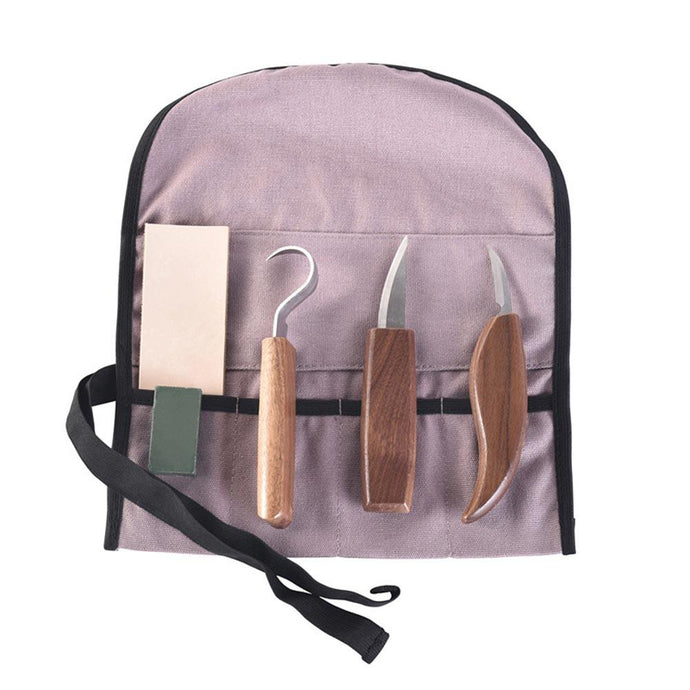Whittling Wonders: The Art and Craft of Wood Bear Carving
Wood bear carving stands as a revered tradition in the world of woodworking, blending artistry and craftsmanship into a unique expression of nature and skill. This ancient craft transforms simple blocks of wood into intricate, lifelike bear sculptures, reflecting both the carver's creativity and their connection to the natural world. Whether carved as a decorative piece, a functional object, or a cherished keepsake, wood bear carvings captivate with their detail and presence.
At the heart of wood bear carving lies a deep appreciation for the subject - the bear. This majestic animal, often seen as a symbol of strength, courage, and wilderness, provides carvers with a rich source of inspiration. Capturing the essence of a bear in wood involves a meticulous process, beginning with the selection of the right type of wood. Softwoods like basswood or butternut are preferred for their ease of carving and fine grain, which allows for detailed work and smooth finishes. Hardwoods, such as oak or maple, offer durability and a more robust texture but can be more challenging to carve.
The process of carving a bear from wood starts with a well-thought-out design. Artists often sketch their ideas on paper or directly onto the wood, outlining the bear's key features such as its powerful paws, expressive eyes, and characteristic fur. The initial roughing-out phase involves removing large sections of wood to shape the basic form of the bear. This step requires tools like saws, chisels, and gouges, which help define the bear's bulk and posture.
As the carving progresses, finer details begin to emerge. This stage involves refining the shape, adding textures, and accentuating features to bring the bear to life. The carver meticulously works on the bear's face, capturing its expressive eyes and distinctive snout. Texturing the fur is another crucial aspect, achieved through various carving techniques that mimic the natural appearance of bear fur. Carvers use specialized tools and strokes to create realistic patterns and depth, enhancing the sculpture's visual appeal and tactile quality.
Wood bear carving demands a blend of patience and skill. Each stroke of the chisel or gouge brings the artist closer to revealing the bear's character and presence. Mastery of carving techniques is essential, as the artist must navigate the grain of the wood and make precise cuts to avoid splintering or damage. The use of quality tools and maintaining their sharpness also plays a critical role in achieving a clean and detailed finish.
Beyond the technical aspects, wood bear carving is also an art form that allows for personal expression. Carvers often infuse their unique style into their work, experimenting with different poses, expressions, and finishes. Some bear carvings depict a bear in a naturalistic pose, capturing it in mid-stride or while foraging, while others might present a more stylized or abstract representation. This flexibility enables carvers to explore various themes and artistic visions, making each carving a unique piece of art.
Once the carving is complete, the finishing touches are applied. Sanding smooths the surface, removing any tool marks and preparing the wood for staining or painting. Some carvers prefer to leave their sculptures in the natural wood finish, highlighting the inherent beauty of the grain and color. Others may choose to paint or stain the bear, enhancing its features or adding a protective layer to ensure longevity.
Wood bear carving also has a strong cultural and historical significance. In many Indigenous cultures, bear carvings are not only artistic expressions but also hold symbolic meanings, representing values such as bravery, leadership, and respect for nature. These traditional carvings often incorporate specific techniques and styles passed down through generations, reflecting the deep connection between the carver and their heritage.
In contemporary times, wood bear carving continues to thrive as both a traditional craft and a modern art form. Artisans and hobbyists alike are drawn to the challenge and satisfaction of creating detailed bear sculptures, participating in carving competitions, and showcasing their work in galleries and exhibitions. The craft also offers a sense of tranquility and focus, as carvers immerse themselves in the rhythmic process of shaping and detailing, finding both joy and fulfillment in their creations.
Whether pursued as a serious craft or a leisurely hobby, wood bear carving invites individuals to explore their artistic talents and connect with the natural world. The transformation of a simple block of wood into a majestic bear sculpture is a testament to the carver's skill, dedication, and passion. As each carving emerges, it carries with it a story of creativity, craftsmanship, and the enduring allure of the bear - a symbol of nature's strength and beauty captured in timeless wood.



